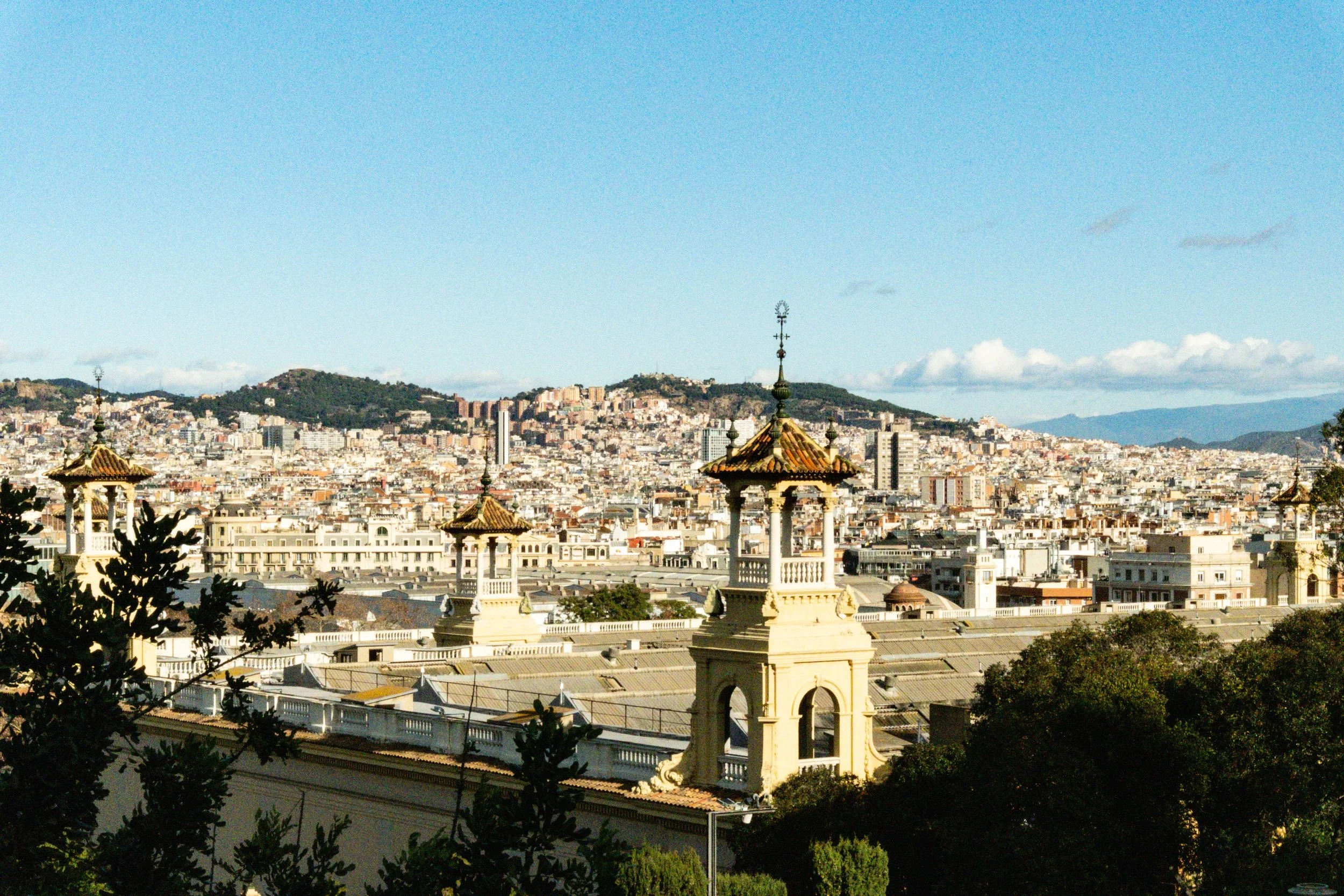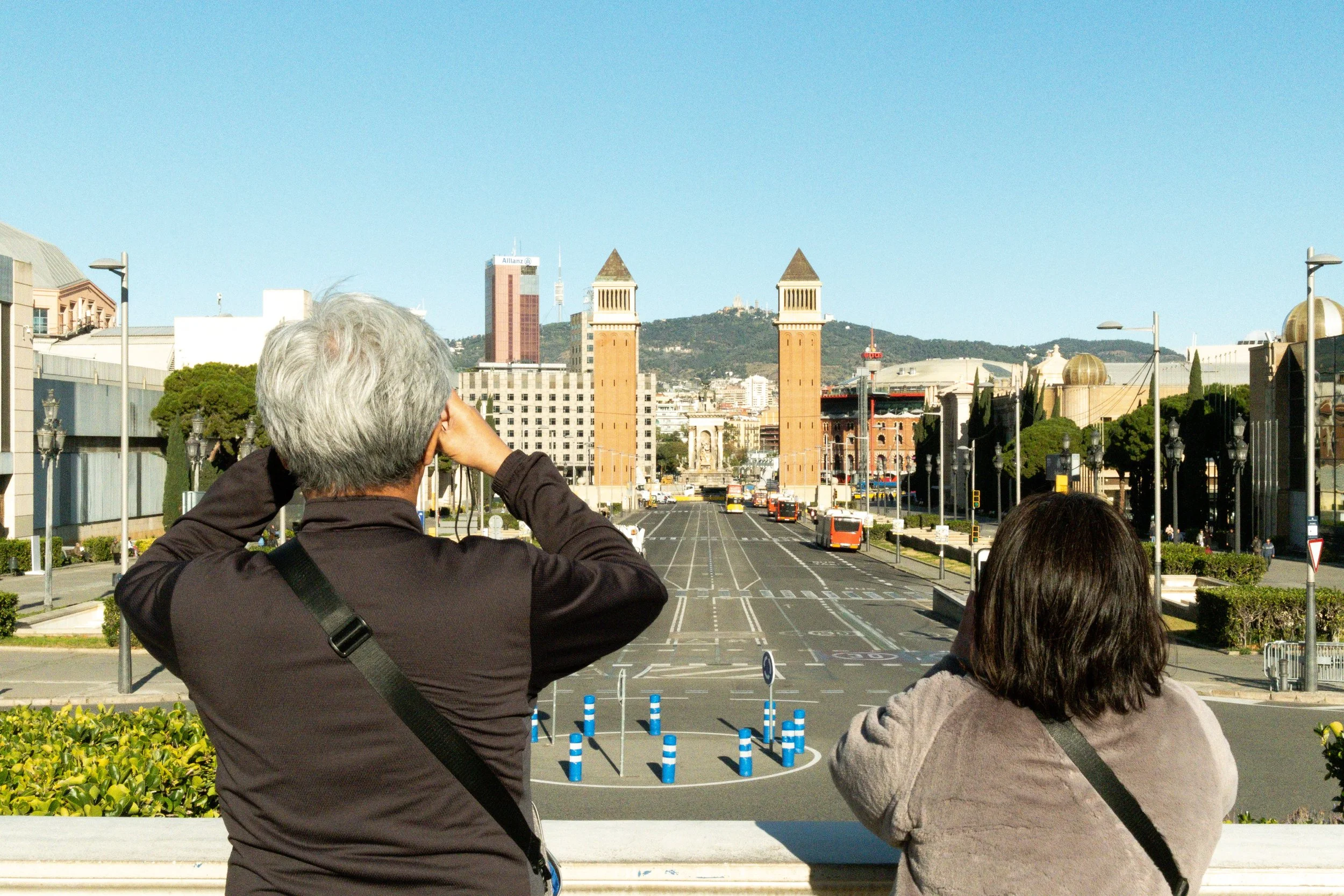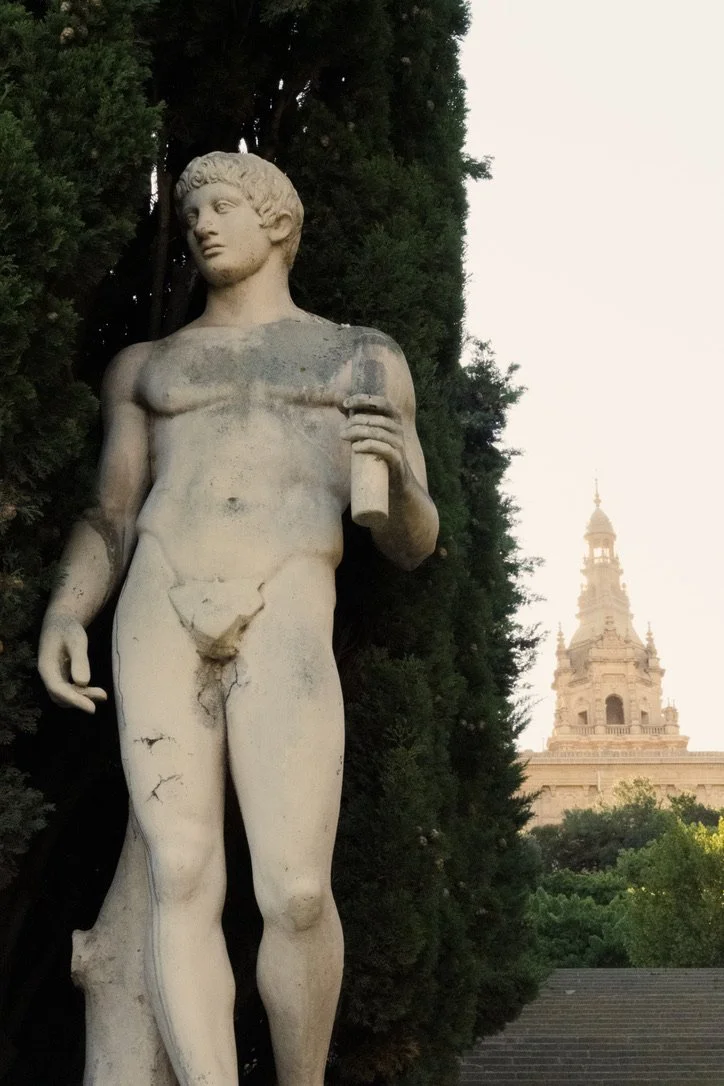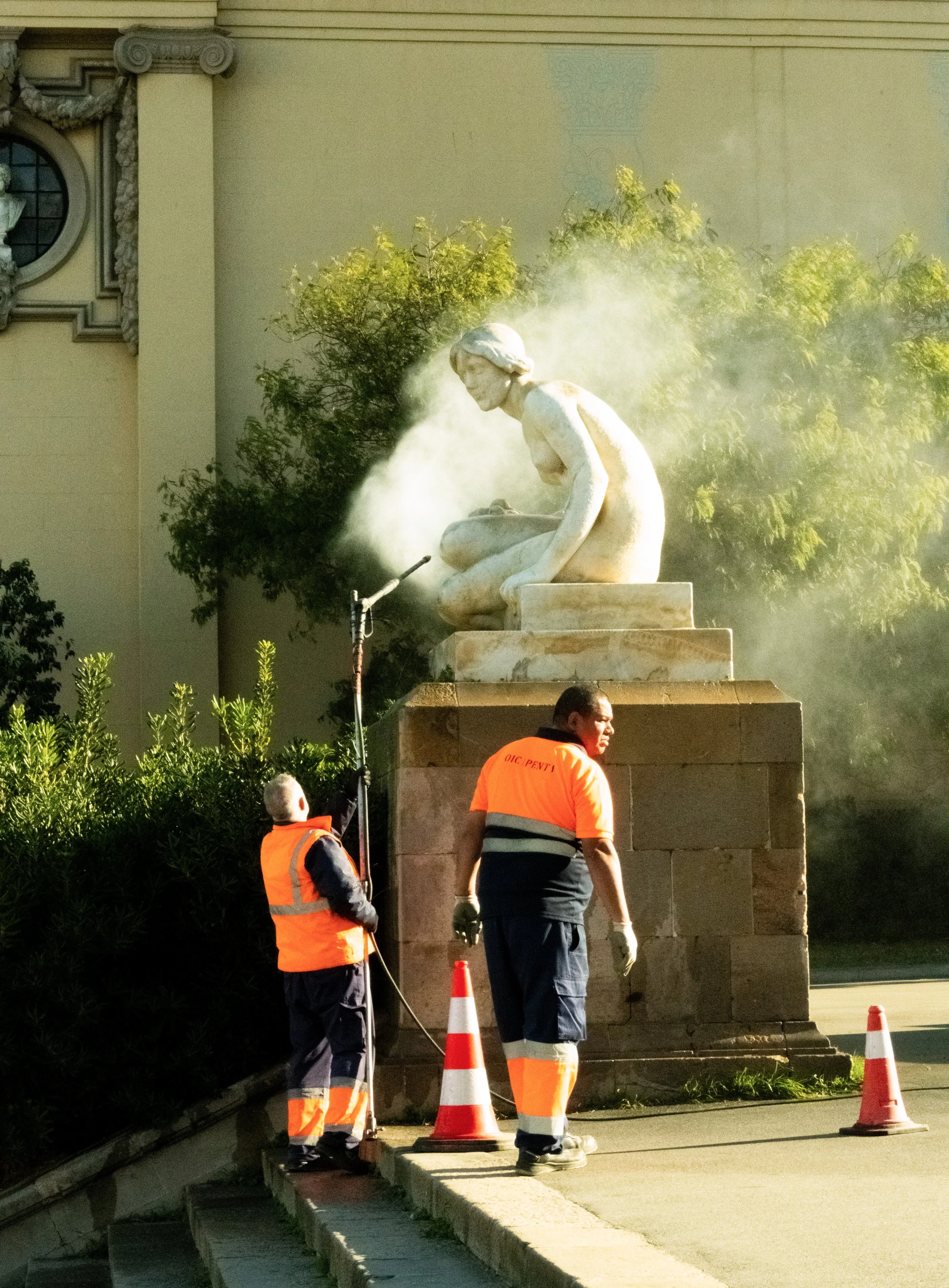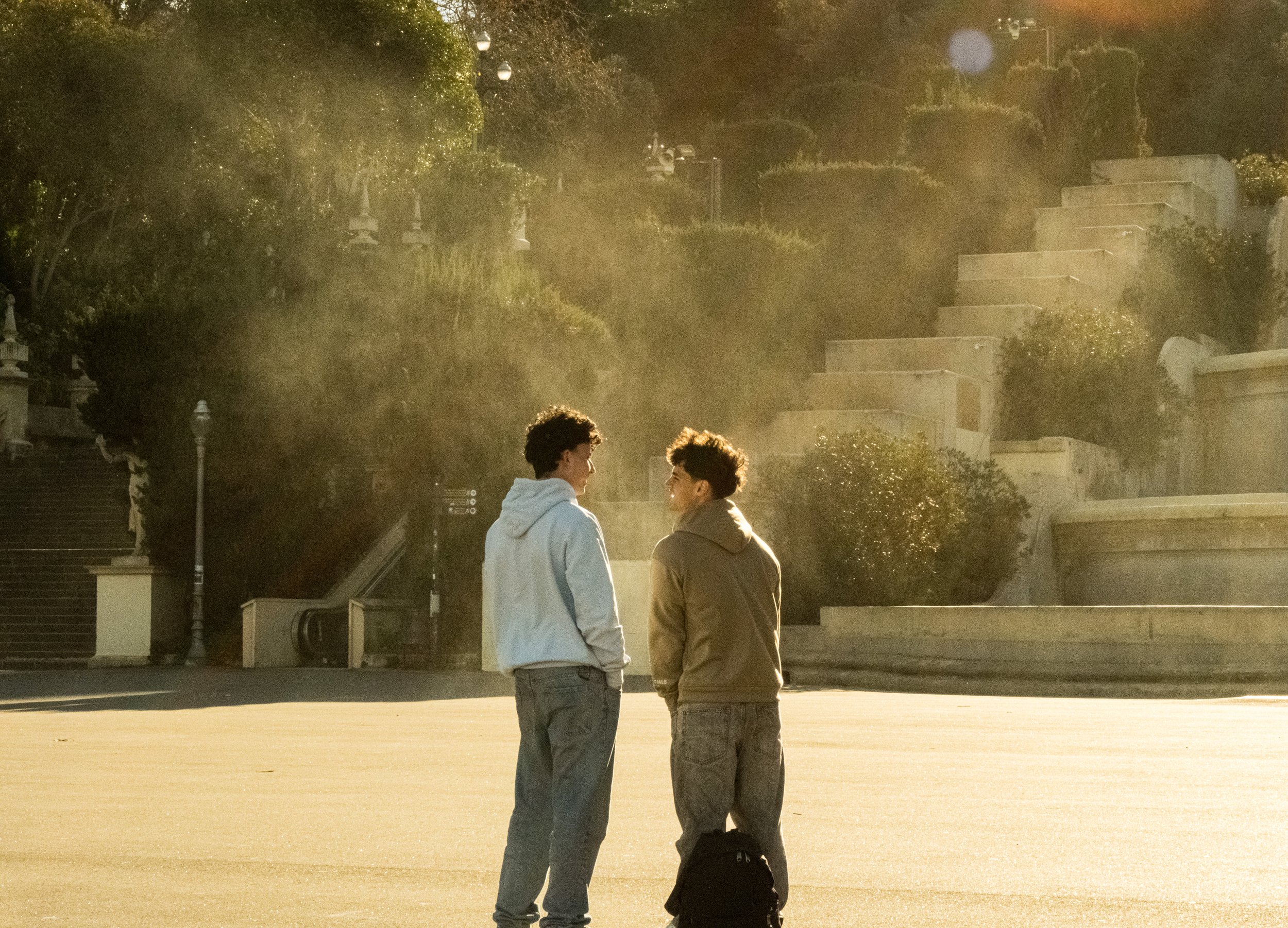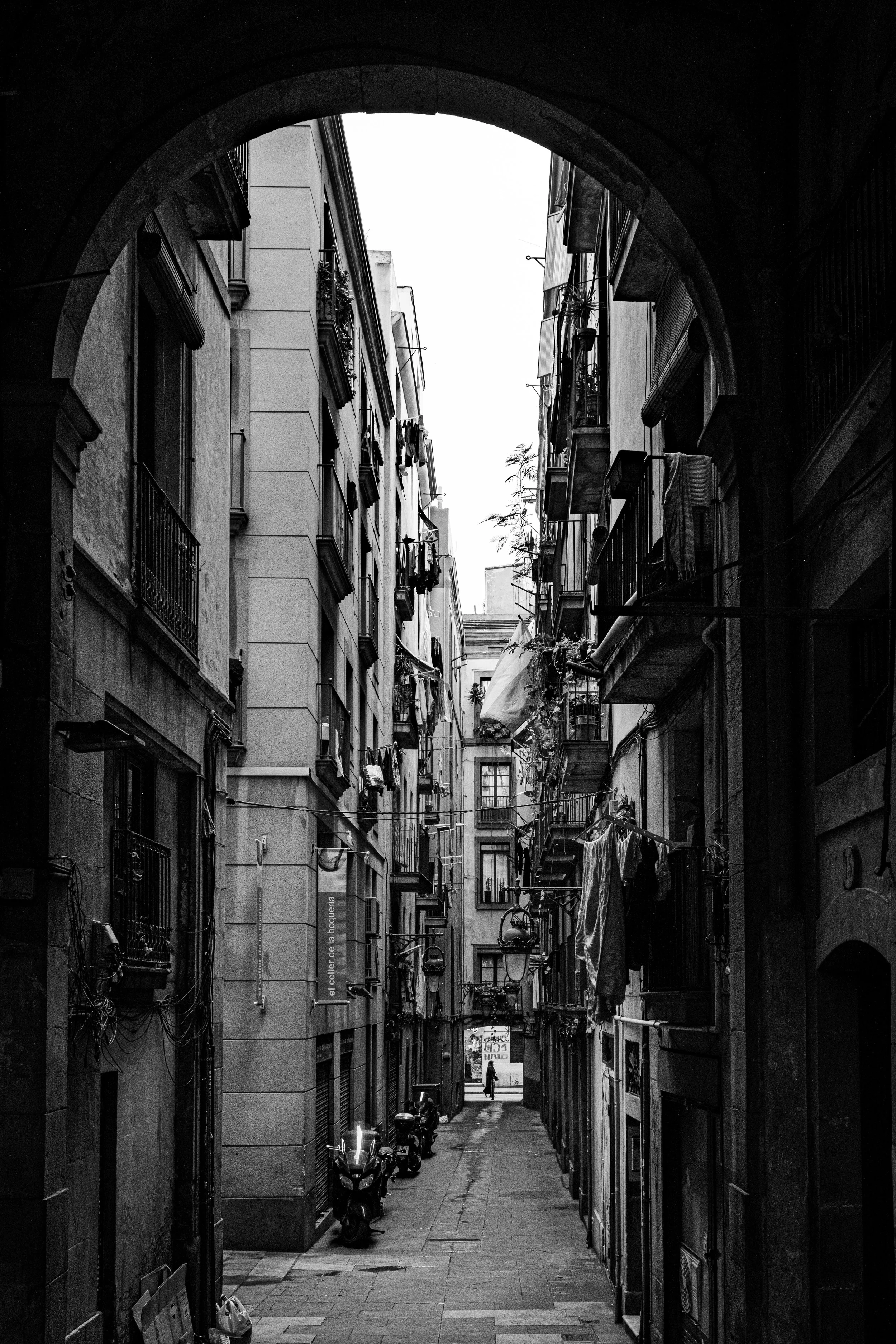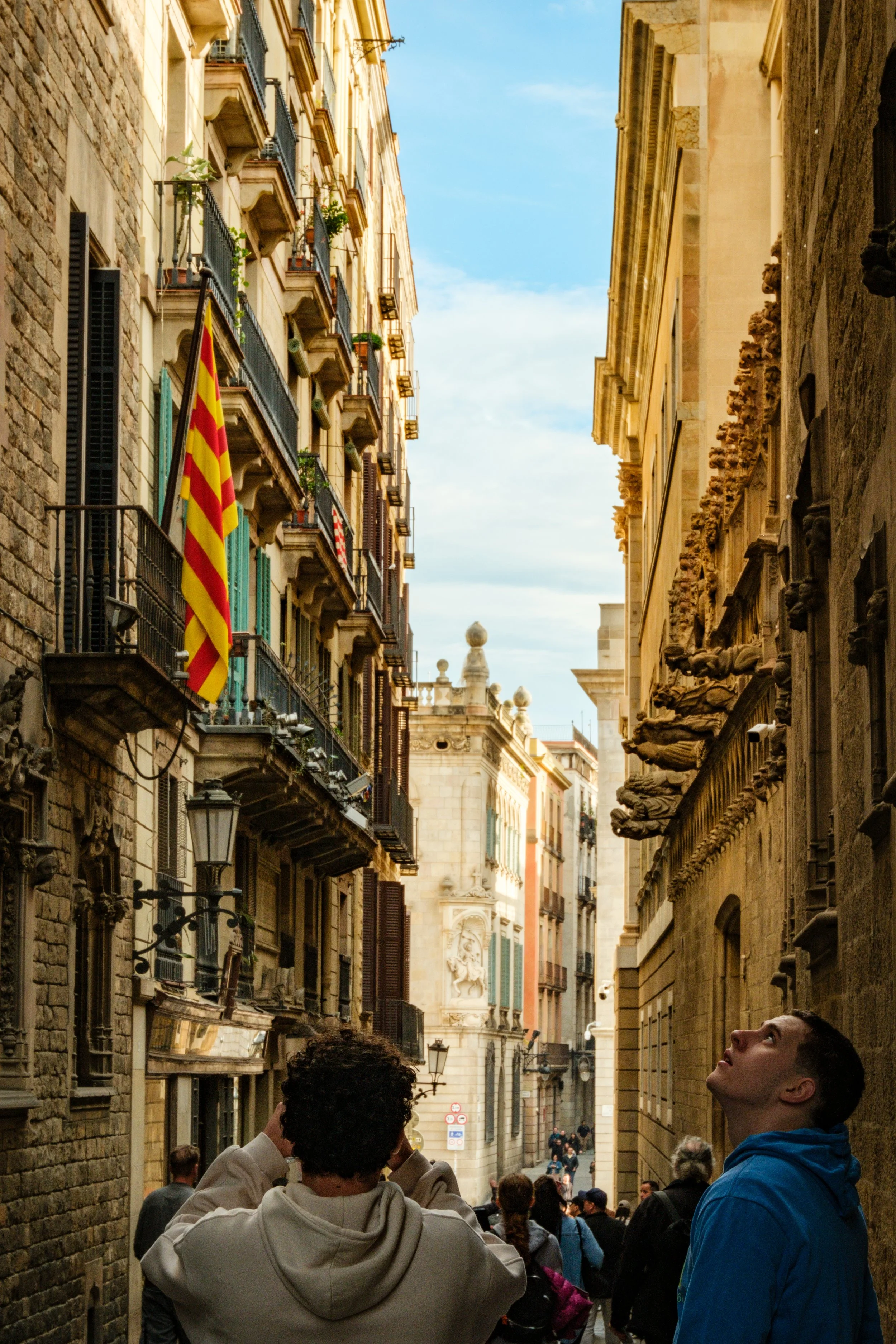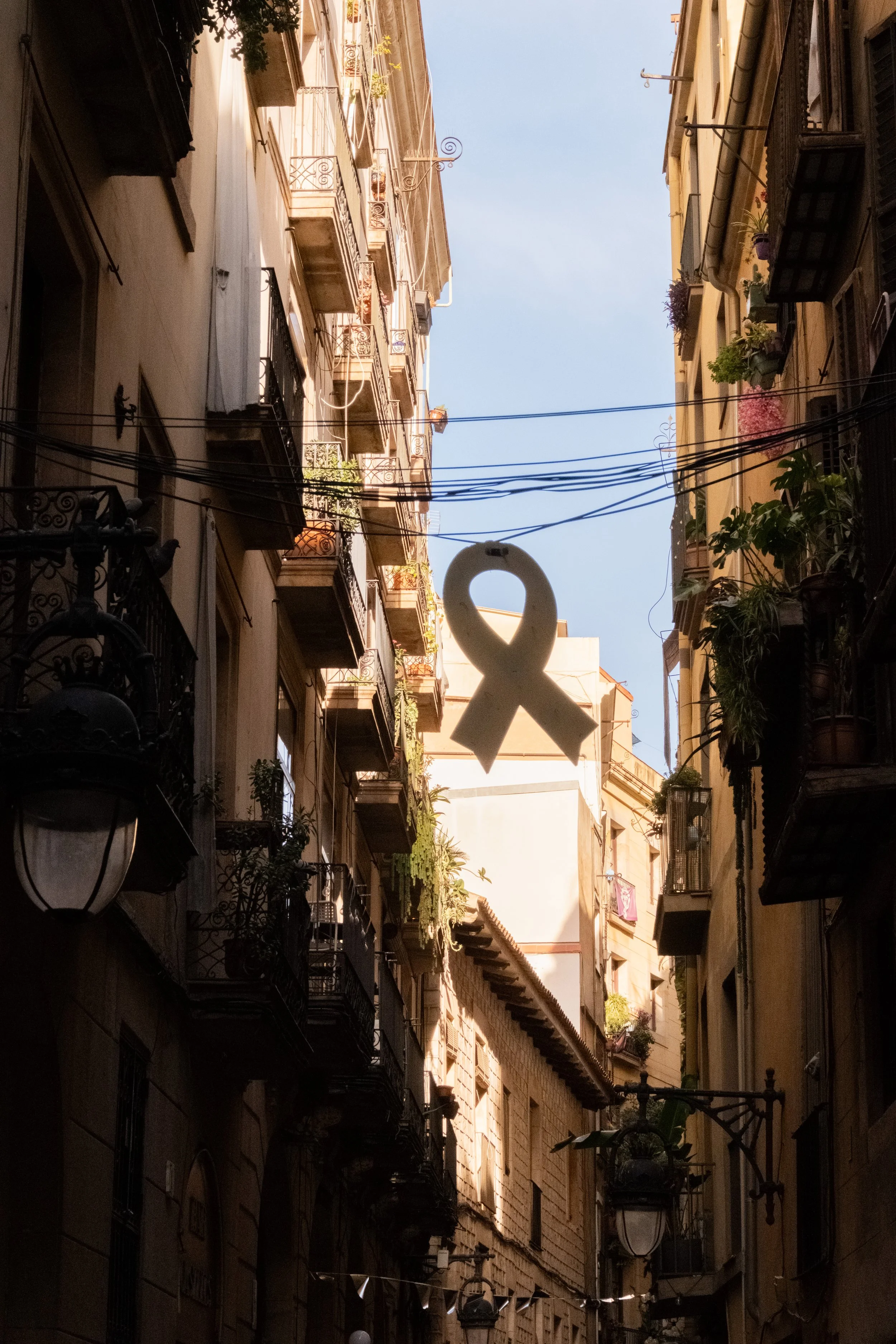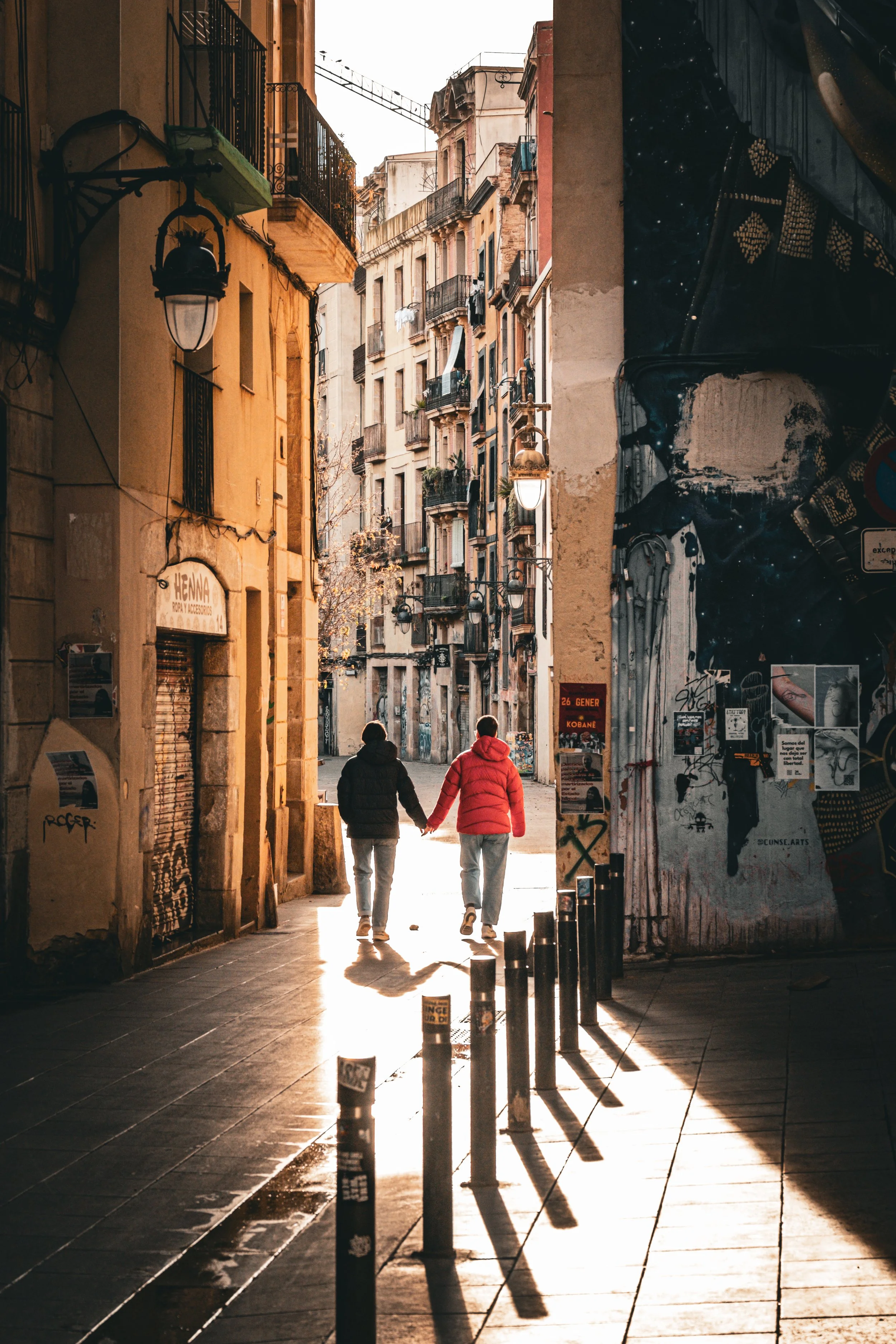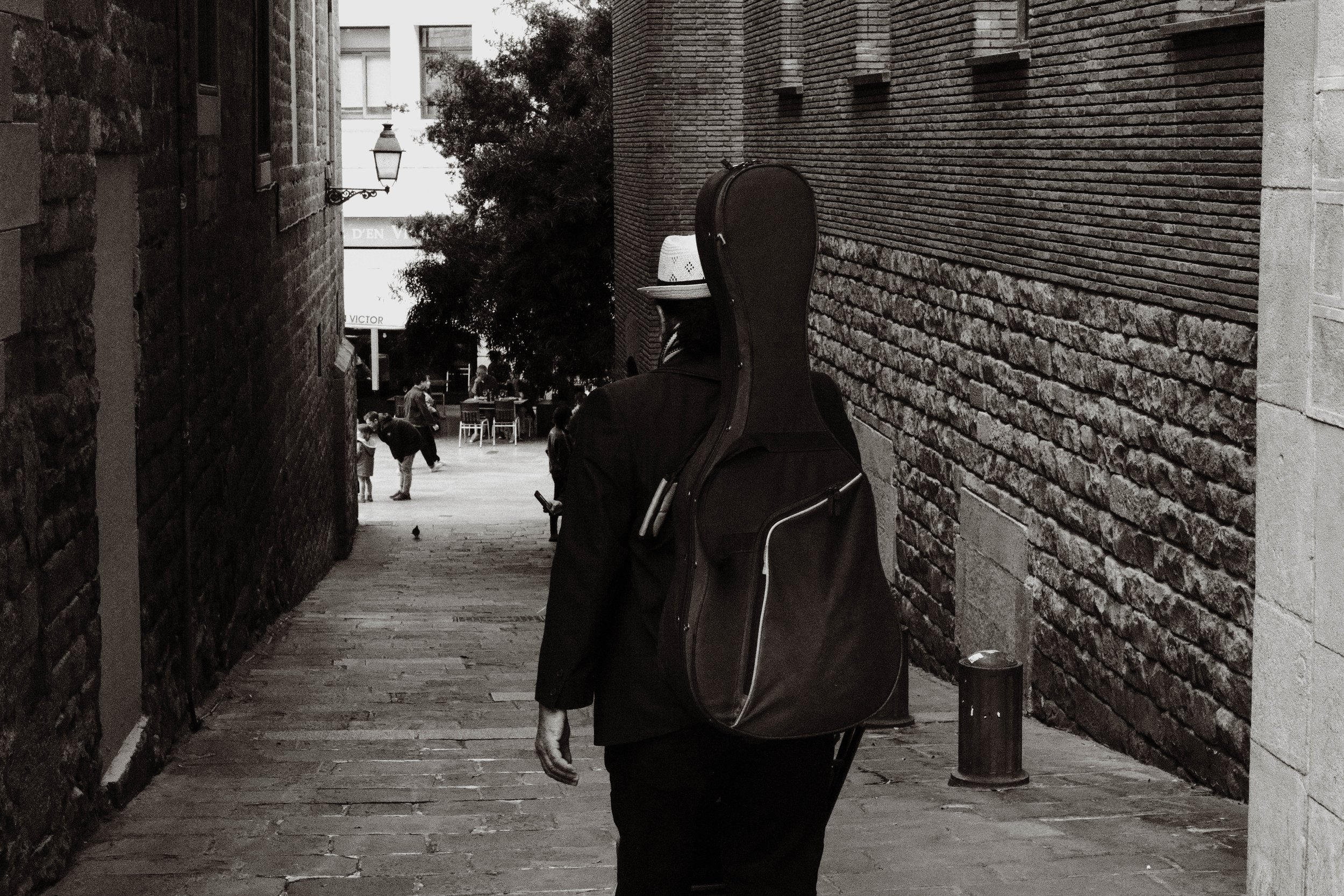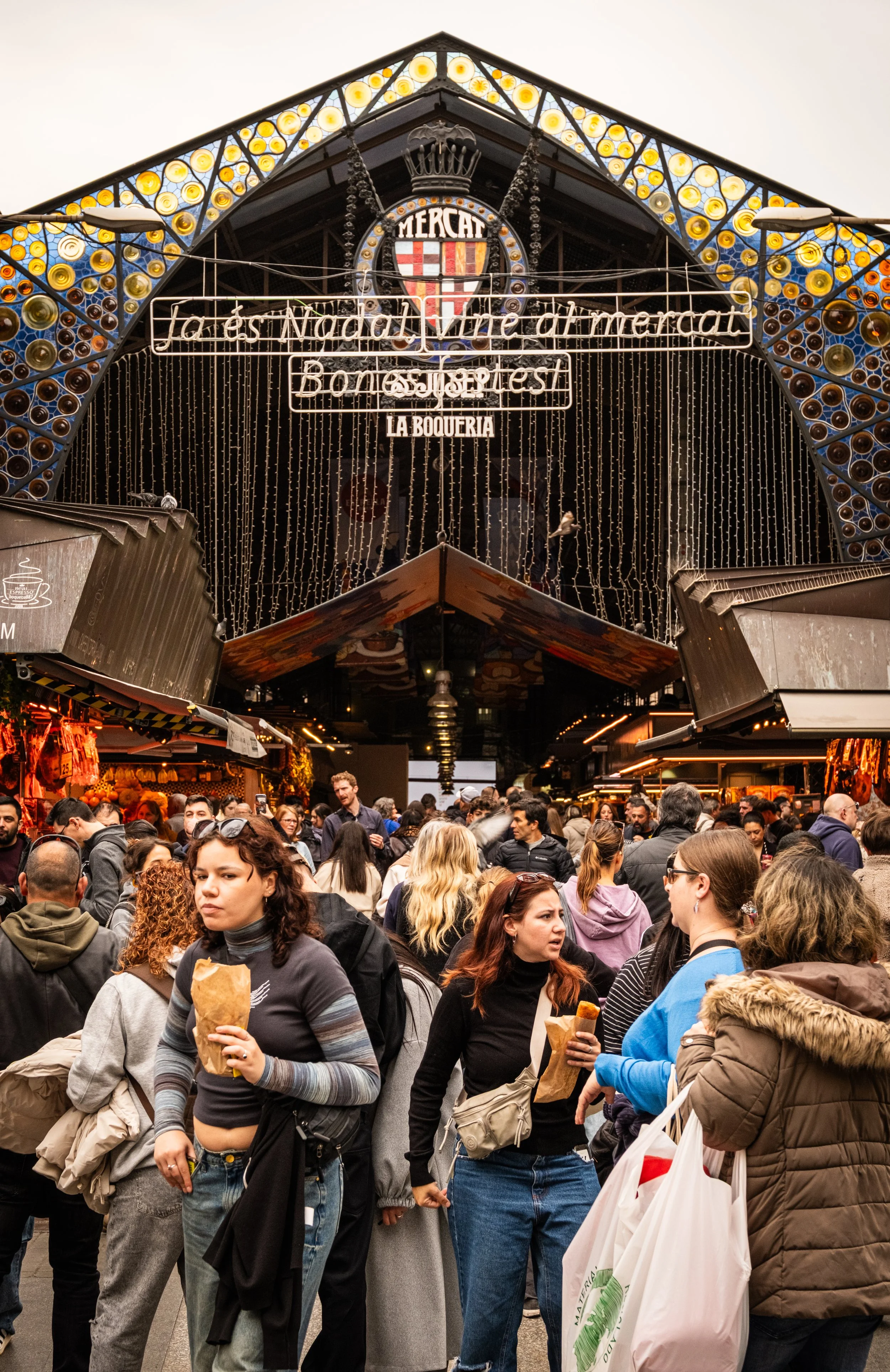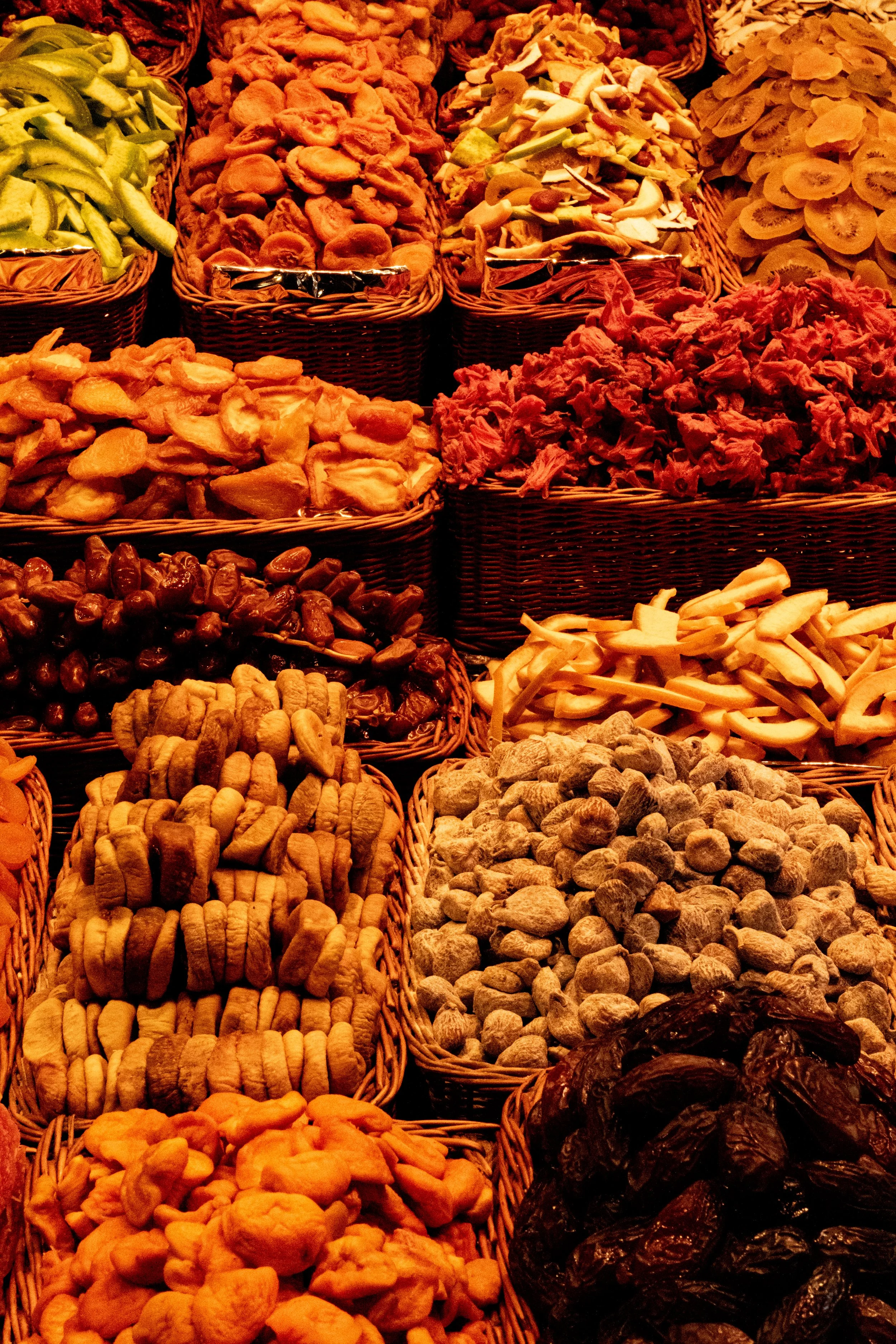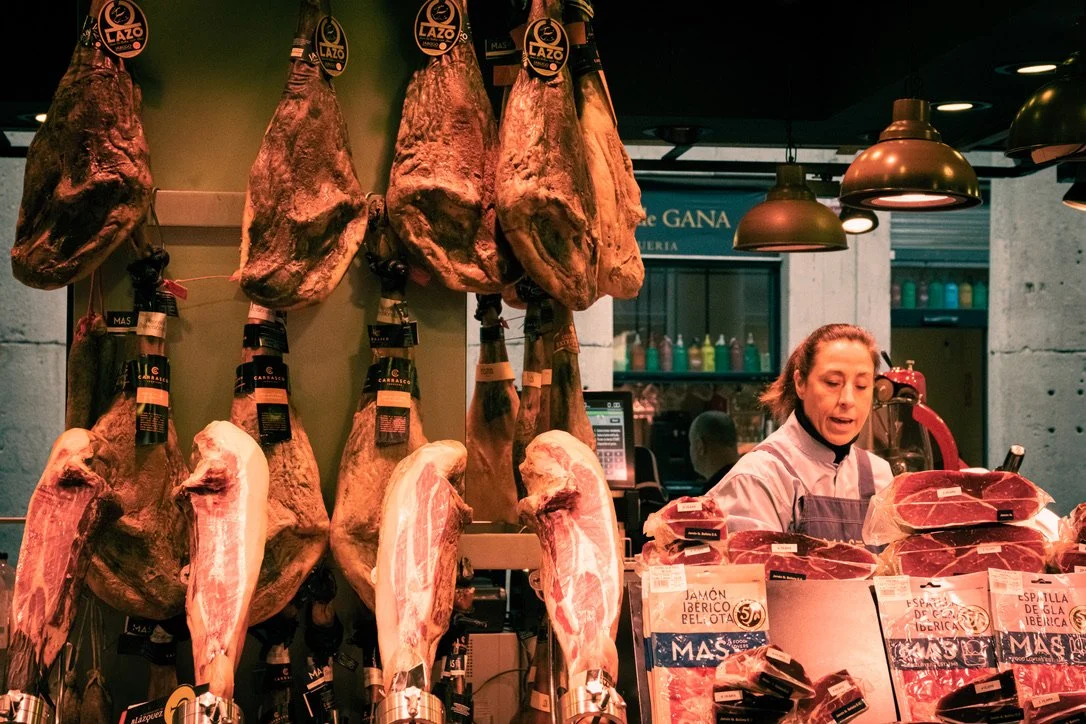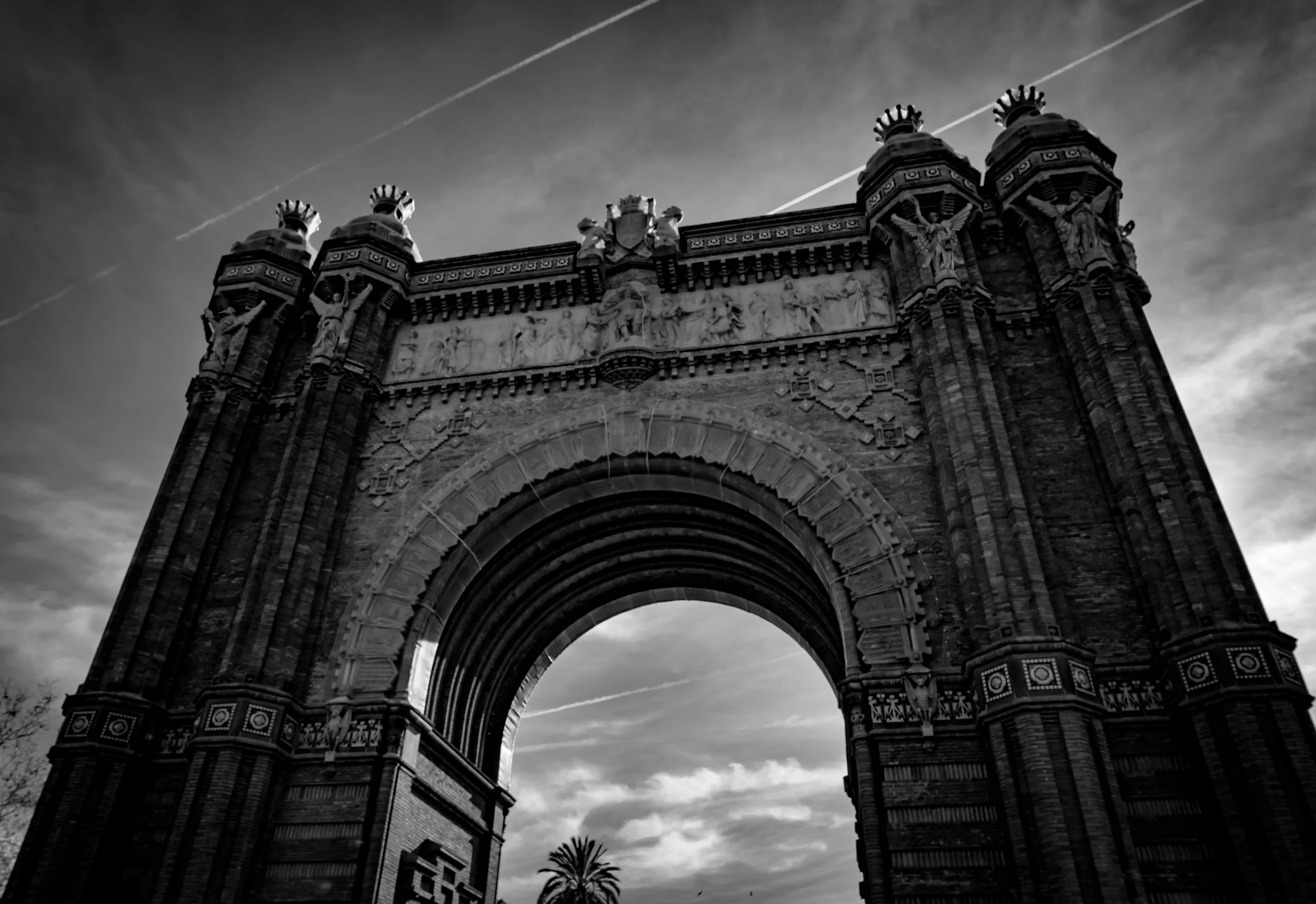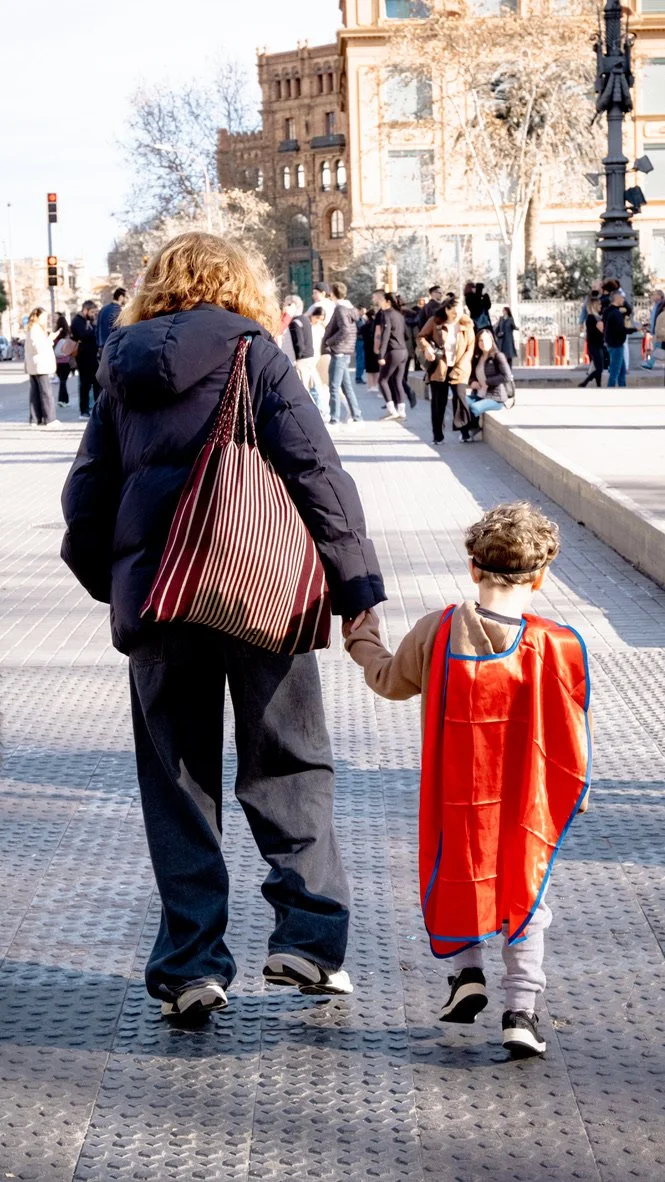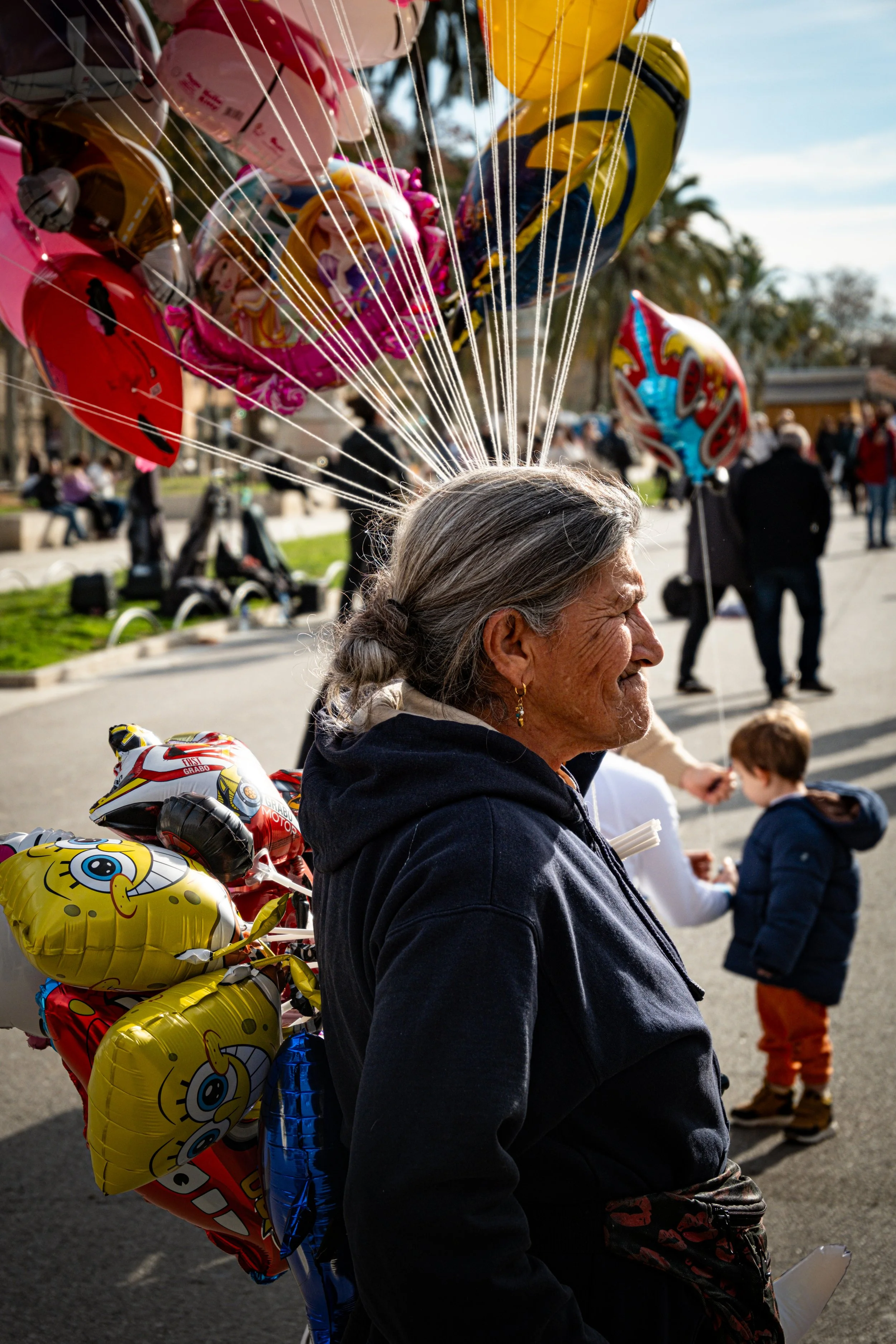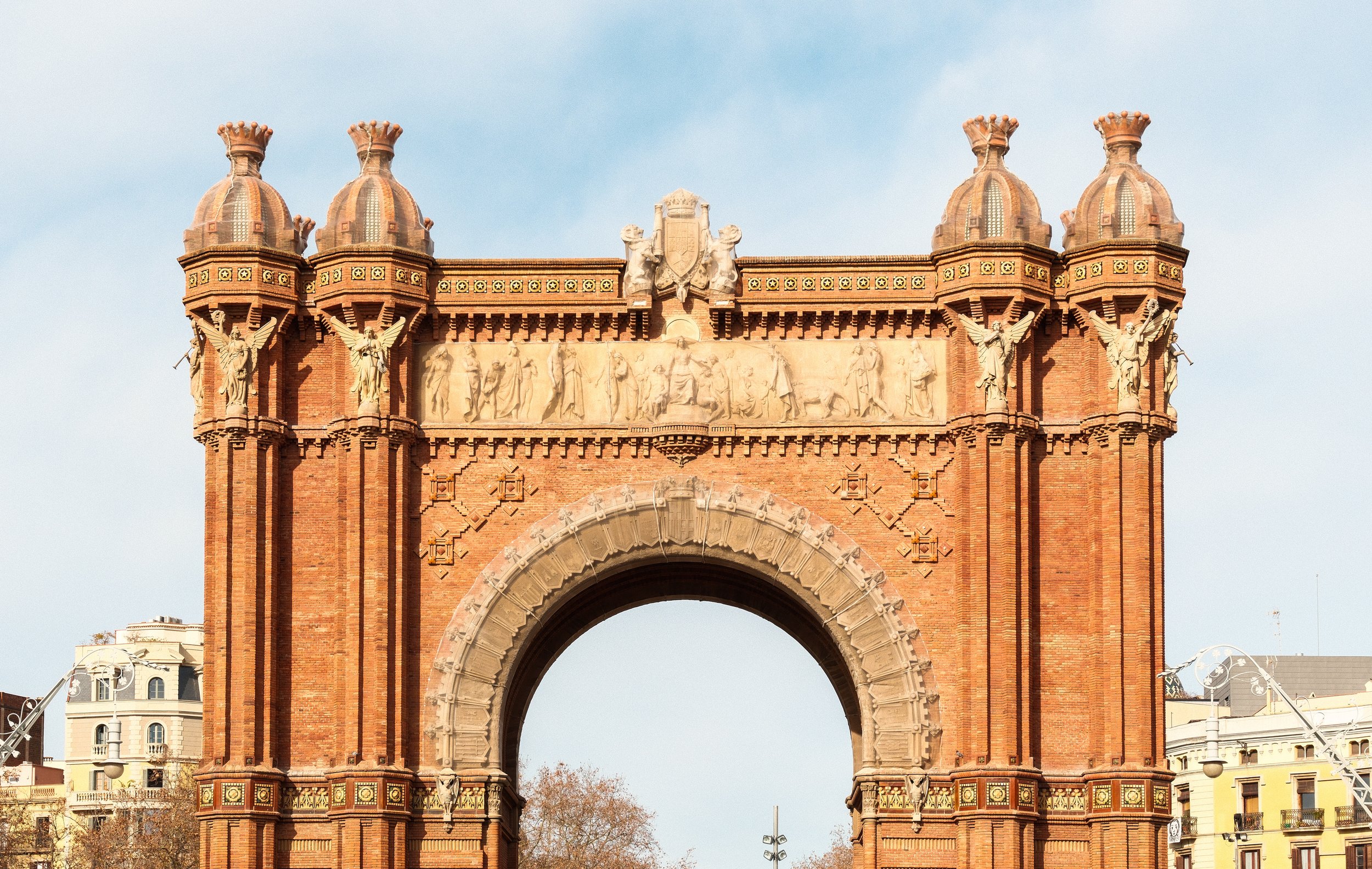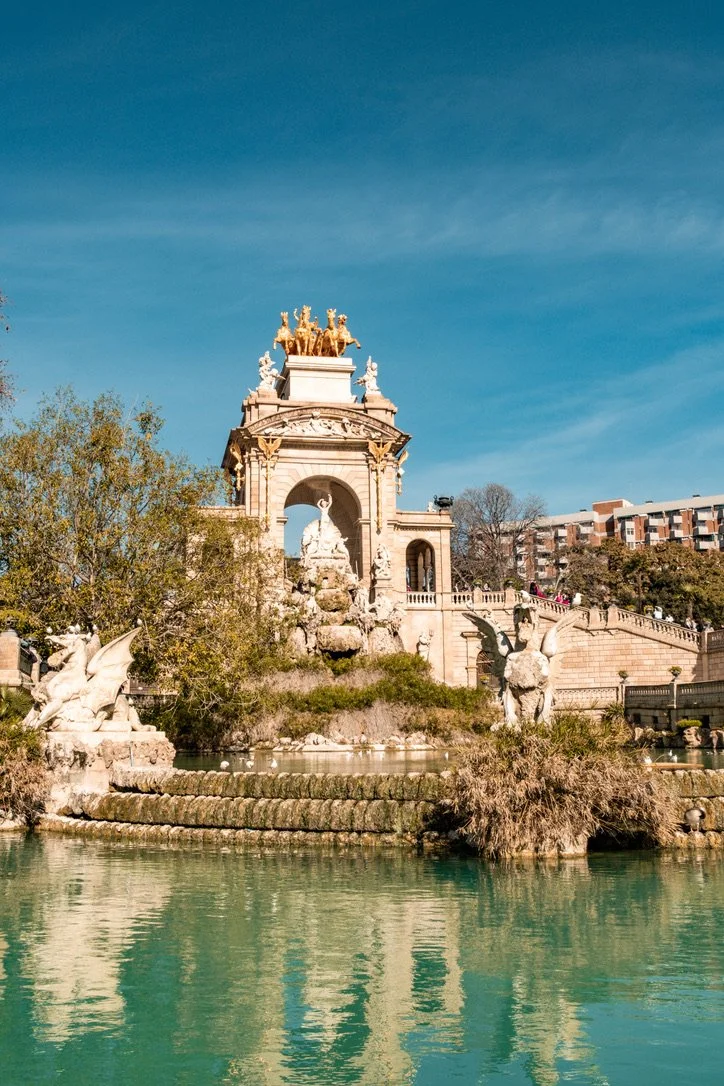
BARCELONA
Barcelona offers a kind of visual architecture that seems made for the camera. The city moves between gothic and modernist styles, sometimes in the same block. Light cuts through narrow alleys and washes across open plazas, giving the streets a sharp visual rhythm. There’s a sense of visual density — ornate facades, layered textures, bold lines. The city gives you structure - and people - to work with, yet enough unpredictability to keep you alert. It’s not effortlessly photogenic; it just makes the effort worth it.
a bit more in control
Barcelona was overwhelming at first — in both the best and most frustrating ways. There was too much happening all the time: striking people, harsh light, bold architecture, colors, textures, movement.
I saw a lot of potential shots, but turning them into something visually interesting wasn’t easy — especially while trying to dial in the best camera settings. I was too focused on technical adjustments and not enough on actually finding the right angle or composition. This resulted in many missed shots. Then I set my ISO to auto, and sh*t still happened…
If you zoom in on a lot of these shots (you really don’t have to!), you’ll notice some pretty obvious noise. That’s because I set my ISO to auto — and then forgot to properly adjust the shutter speed and aperture. Looking back, I kind of want to curse myself.
But let’s just say it was all a deliberate artistic choice to achieve that filmy look.
Museu Nacional d’Art de Catalunya (MNAC), viewed from the boulevard Avinguda de la Reina Maria Cristina on an overcast day
View from Museu Nacional dÁrt de Catalunya (MNAC), Montjuïc hill
Looking up Avinguda de la Reina Maria Cristina toward the Venetian Towers and Plaça d'Espanya.
Touristception
Still looking for parking… Mr. Bean style
Broken, yet unbowed. Also missing... something important
Public art, maintained with pressure and care
Light, dust, and us
The alleys of Barcelona (especially in Gothic Quarter) don’t announce themselves — they pull you in. One moment you're on a bustling boulevard, and the next you've slipped into a corridor of shadows and echoes. They're tight, uneven, and alive. Footsteps bounce between stone walls, occasionally broken by the growl of a scooter weaving through at improbable speed.
These alleys are full of half-scenes — a conversation overheard, a radio playing behind a curtain, the sound of a fork on a plate — moments that feel important but never resolve. You catch fragments, gestures, silhouettes. You never get the full picture, but that’s part of the draw.
They smell of time — of stone, damp metal, detergent, coffee, and the ghost of last night’s wine. You’re never quite lost, but you’re rarely sure where you are either. And somehow, that’s the point. The alleys aren’t shortcuts — they’re the city whispering, asking you to slow down, look closer, and stay just a little longer.
Balconies lean so close you could pass a cigarette between them. Plants spill from rusted railings, laundry sways overhead, and shutters hang slightly crooked — each with a story you’ll never quite know. In some alleys, light barely filters through, slicing sharp diagonals across the cobblestones. In others, it arrives like theater — cutting through shadow in stark beams, catching on dust, chrome, or the curve of a passing shoulder.
It’s not a city that announces itself all at once. A nun wheels a cart of folding chairs through a narrow street streaked with graffiti, while someone lights a cigarette two steps away, uninterested. A man in a long coat plays a wooden flute beneath a carved window, his melody swallowed by footsteps and fading light. In another square, a saxophonist leans into a solo with no audience but the stone. A guitarist walks alone with his case slung across his back, vanishing into an alley that smells like coffee and wet stone. Some alleys are packed shoulder to shoulder; others give you room to breathe.
La Boqueria is a feast before you’ve even eaten. Stalls overflow with cured jamón ibérico, wedges of manchego, and piles of olives stuffed with garlic or anchovy. Fresh fruit cups and rainbow-colored juices tempt from every corner, though often priced for tourists. Seafood stands gleam with octopus, razor clams, prawns, and whole fish laid on crushed ice. You’ll find salt cod (bacallà), empanadas, tapas served hot on the spot, and paper cones filled with chorizo or fried squid. For a quick bite, there are small bars inside the market — some good, some just photogenic — where you can grab a grilled mushroom tapa or a slice of tortilla with a glass of cava before diving back into the crowd.
Markets are woven into daily life in Barcelona — places where locals pick up fresh produce, exchange quick words with vendors, and move with practiced ease between counters. You’ll find them in nearly every neighborhood, each with its own rhythm and regulars. La Boqueria is by far the most popular — some might say overrated. Locals often call it overpriced, too crowded, too many tourists. And yet, it’s hard to deny the draw: the sheer sensory overload, the hanging jamón, the rainbow of fruit juices, the echo of knives and footsteps under the iron roof. It may not be the most authentic, but it’s very much part of the city’s stage — loud, vibrant, unapologetically on display.
If you’re visiting La Boqueria, expect tourist pricing on anything ready-to-eat — especially juices, pre-cut fruit, tapas, and seafood cones. A juice that might cost €1.50 in a neighborhood market can easily be €3 or more here. To avoid the markup, skip the front stalls near the main entrance and walk deeper inside, where some vendors still cater to locals. Better yet, explore other markets like Mercat de Sant Antoni or Mercat de la Concepció — less flashy, more local, and often much kinder to your wallet.
Just outside the main entrance of La Boqueria, you step directly onto La Rambla — Barcelona’s most famous and longest pedestrian boulevard. It stretches from Plaça de Catalunya down to the Columbus Monument by the sea, lined with street performers, kiosks, and café terraces. It’s busy at almost every hour — a constant stream of tourists, locals, flower sellers, and the occasional pickpocket — making the sudden spill from the sensory chaos of the market into the movement of the street feel almost seamless.
The Arc de Triomf stands at the top of Passeig de Lluís Companys in Barcelona. Built from red brick with detailed stonework, it forms a wide passageway framed by palm trees and streetlights. The walkway beneath it is busy with people walking, cycling, and skating, while the open space around the arch gives a clear view of the sky and the nearby park.
From the Arc de Triomf, walk straight down Passeig de Lluís Companys, the wide pedestrian promenade lined with palm trees and benches. It’s about a five-minute walk. At the end of the promenade, you will reach the gates of Parc de la Ciutadella directly in front of you. The entrance opens near the large green lawns, and from there you can follow the paths toward the lake or the Cascada Monumental fountain.
Parc de la Ciutadella is a large public park in Barcelona with lawns, shaded paths, and gardens. It has a large boating lake where you can rent rowboats, and the Cascada Monumental fountain with sculptures and a golden chariot. The park also contains palm trees, flower beds, and playgrounds, making it popular for walking, picnics, and relaxing. Inside the park, you’ll also find the Barcelona Zoo, a greenhouse (Umbracle), and the Catalan Parliament building.
You don’t leave Barcelona with big conclusions. You leave with fragments — light on stone, a sound in an alley, a look caught for half a second before it’s gone. It’s a city that resists being summed up, and maybe that’s what makes it worth photographing. You walk, you watch, you press the shutter, and you move on.
Next let´s see the inside of the Basílica de la Sagrada Família.

